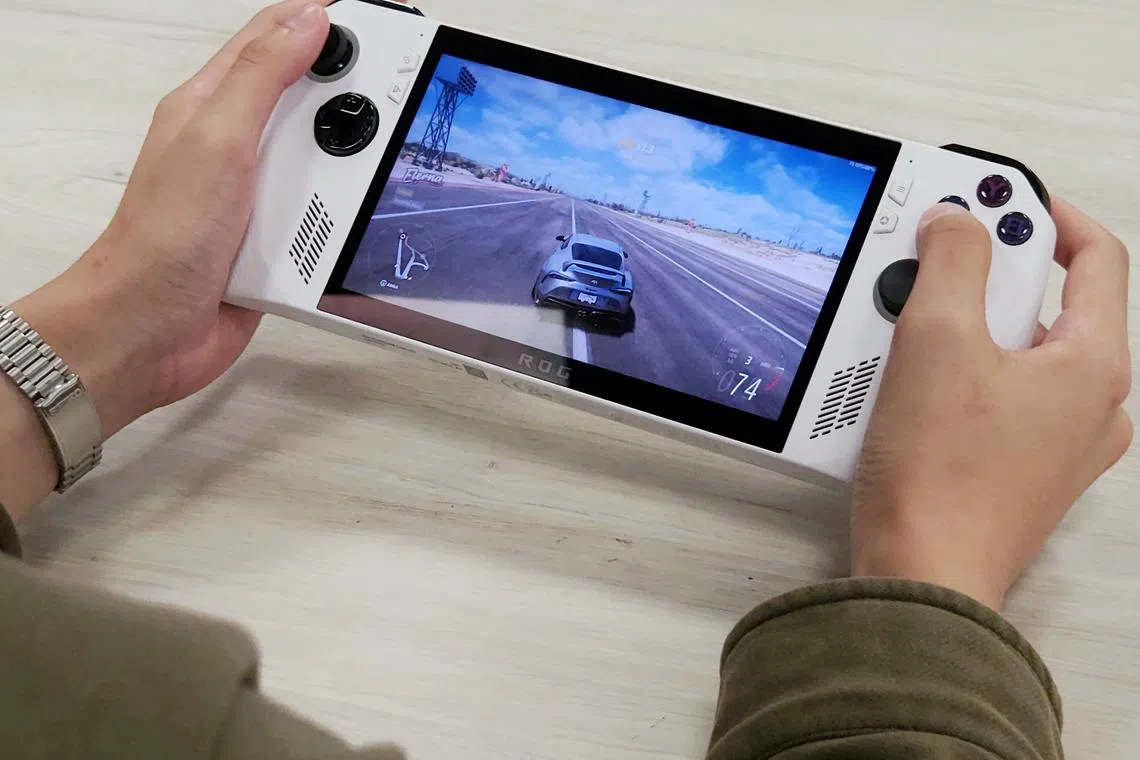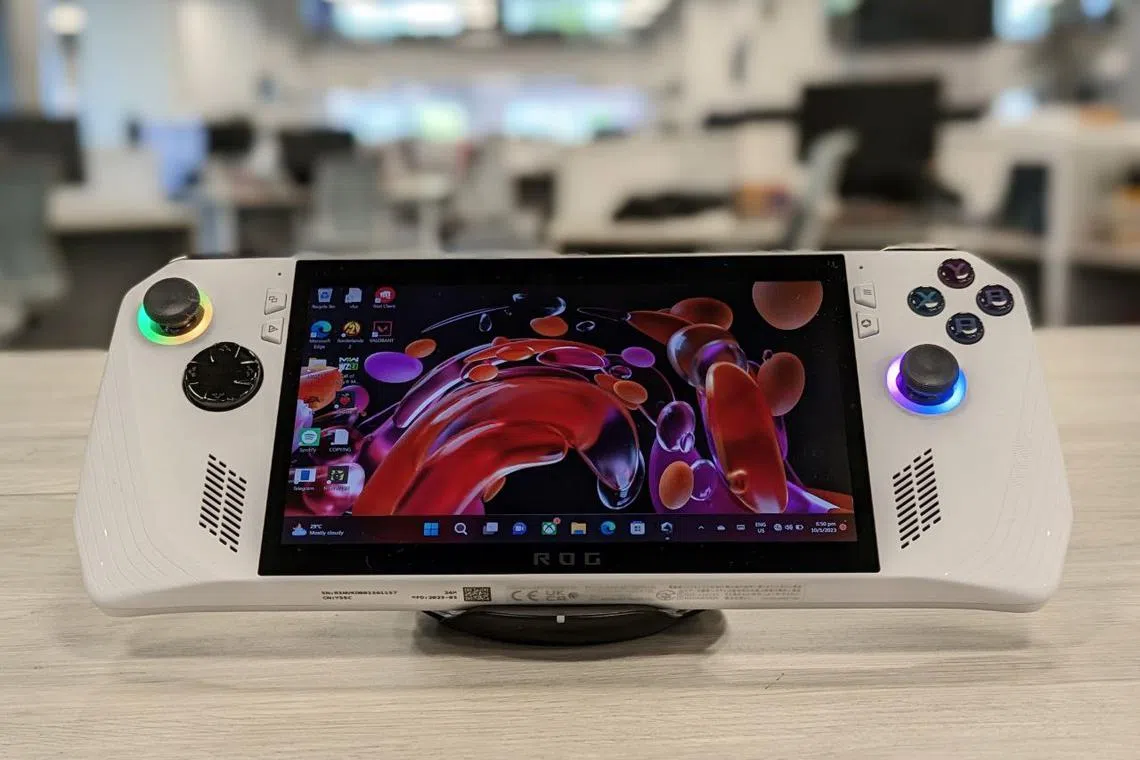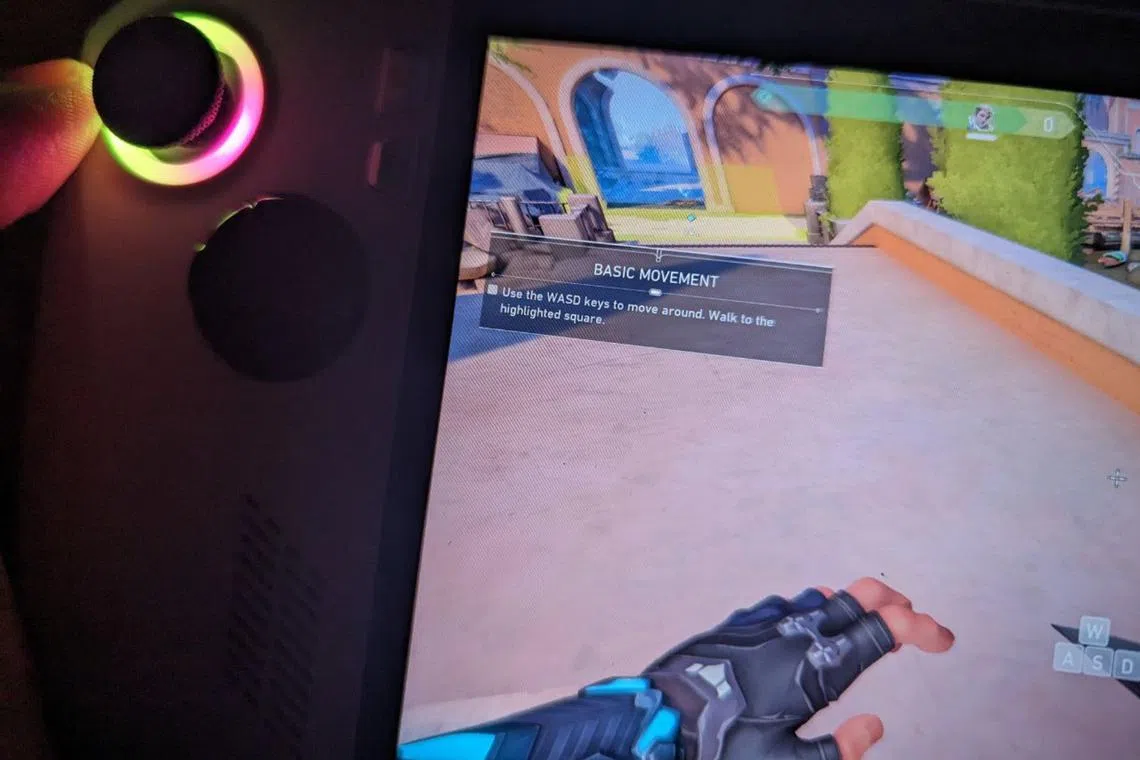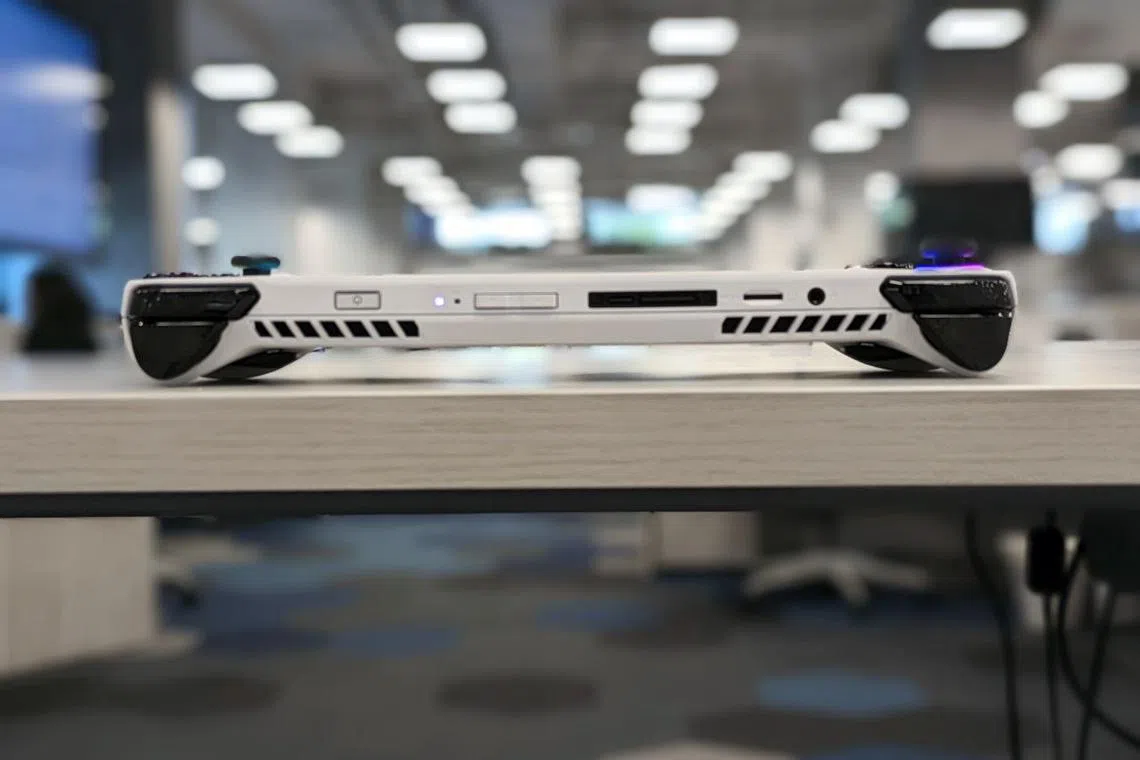Asus ROG Ally review: Immense power, glitchy package
Sign up now: Get ST's newsletters delivered to your inbox

The Asus ROG Ally's price and release date in Singapore will be announced in June, but it is expected to cost around $1,000.
ST PHOTO: YONG LI XUAN
Follow topic:
SINGAPORE - When games work smoothly, Asus’ first handheld gaming PC is a gamer’s dream come true.
It is jaw-dropping to see games that you typically find on a high-end console run on a device of this size, with detailed graphics and all the luxuries that gamers have had to sacrifice when playing on the go.
But extremely long loading times, frame rate dips and unoptimised games remind me that the Asus ROG Ally is essentially a miniature PC outdoing itself to play intensive video games.
More often than not, it bites off more than it can chew.
I spent almost a week with the Ally, which will launch in limited markets in June for US$700 (S$932). Its price and release date in Singapore will be announced in the same month, but it is expected to cost around $1,000.
The Ally is the Taiwanese manufacturer’s answer to the Steam Deck, launched by American game distribution company Valve Corporation in 2022. But the Steam Deck, whose price starts at US$399, is not officially available in Singapore.
Running on Windows 11, the Ally literally slaps the standard Windows interface on a 7-inch display. I found myself squinting as I stretched my thumbs across the screen to log in to my Windows account and access my Wi-Fi during the set-up.
As a pocket PC, the Ally is able to access any app that will run on your computer – from Web browsers, the Steam gaming platform and the preloaded Xbox Game Pass. Those with big thumbs will find it a pain to push the tiny icons, as few apps are optimised for the small touchscreen.

The Asus ROG Ally runs on Windows 11 and can boot any app or video game that you can install on a standard PC.
ST PHOTO: OSMOND CHIA
PC games with cluttered menus like Call of Duty: Warzone are also frustrating to navigate due to the large number of icons and tiny text sprawled across the screen.
You’ll need to dive into the settings menu for most games to switch the controls to a controller input, as not all games were able to detect that I was using a controller and not a keyboard.
Changing the settings was far from smooth, though, as games like Warzone were unable to detect the virtual keyboard to log in, requiring me to pair my physical keyboard with the Ally via Bluetooth in order to get to the settings menu.

Not all games support the Asus ROG Ally’s controller input, requiring improvisation, and at times, a keyboard.
ST PHOTO: OSMOND CHIA
When I raised this issue to Asus, I was directed to the Asus Armoury Crate, a hub where users can access all the games they have installed, and tune the device’s performance and visual settings. Booting up Warzone and other titles from the hub ensured that the Ally’s controls were set to controller mode.
But be prepared that not all games will be optimised for a handheld, including popular first-person shooter Valorant. I could not get past the tutorial because the game did not support the Ally’s controller. There doesn’t seem to be a clear fix for this and the device often requires some improvisation to get things running.
Unlike the Steam Deck, there are no labels on video game platforms to signal whether a game is playable on the Ally. You buy games for the Ally at your own risk.

Not all games work well on the Asus ROG Ally.
ST PHOTO: OSMOND CHIA
I put the Ally to the test with Forza Horizon 5 – the lauded triple-A racing simulator with intensive graphics.
Don’t expect the Ally to run graphics on its highest settings on the default performance mode. The console’s handheld-focused AMD Ryzen Z1 Extreme processor struggled to render Horizon’s vast and detailed open world, with severe lags, texture pop-ins and the audio going choppy. As a dozen other cars entered the screen during a race, every push of a button took seconds to register. The game was unplayable.
With graphical settings reduced, the Ally at least fulfils the dream of playing high-end games smoothly. On lower settings, the Ally was able to keep up with whatever Horizon threw at it – rendering races smoothly on its 120Hz screen. The ability to see so far into the distance in Horizon’s vistas is stunning to behold on a tiny device.

Even on lower graphical settings, the Asus ROG Ally is able to display impressive graphics with great draw distances.
ST PHOTO: YONG LI XUAN
This is where I momentarily fell in love with the Ally. Its alarmingly powerful speakers engulfed me in the roar of my Toyota Supra’s engine; the device’s haptic feedback rumbling with every shift of the gear, immersing me in the fantasy of racing in a supercar.
The Ally also has an ace up its sleeve: Turbo mode. It cranks up the processing power to tackle games at higher graphical settings, but at the price of battery life, which struggles to last for more than an hour.
Most impressive were the system’s dual fans, which kept the device cool and nearly silent even as I tore through Horizon’s Mexico-inspired map at high speeds.

The Asus ROG Ally’s build and controls will be familiar to anyone who has handled a Nintendo Switch.
ST PHOTO: OSMOND CHIA
The Ally makes cake out of games that are less graphically intensive, like 2-D platformer Celeste, and older titles like Borderlands 2. Even the new rhythmic action game Hi-Fi Rush, known for its comic book-like visual style, ran smoothly on the Ally’s performance mode. This is the sweet spot where the Ally truly shines.
Serious gamers who wish to play online should not expect to achieve the same highs on the Ally as on a mouse and keyboard with a gaming PC, however. The occasional frame rate dip, input lag and the shrunken elements on the screen put me at a serious disadvantage and I quickly returned to games that I could play at my own pace.
But I couldn’t play for long; in my short time with the Ally, I found it struggled to survive past two hours when playing high-end games like Warzone and Horizon 5, although your mileage is expected to last longer with less intensive games.
Asus provides gamers many tools to configure the Ally to their needs in its Command Centre. Gamers can choose to play on lower settings to prolong the battery life, for instance.
As I improvised my way through Ally’s settings and frequently reached out for the charging cable, I thought to myself: “Would I have a more enjoyable session of gaming on the move with a Nintendo Switch?”
The Switch can only dream of running the level of games that are played on a portable PC, but it makes up for this with refinement and stability.
The incredibly powerful Asus ROG Ally is by no means a bad product, but clunky integration of Windows, poor battery life and a lack of clarity over optimised games make it more troublesome than you would expect – far from a grab-and-go device like the Nintendo Switch.
But if you already have a game in mind that you’re certain will run smoothly on the Windows-based handheld, the Ally is still sure to bring moments of console-quality fun on the run.

